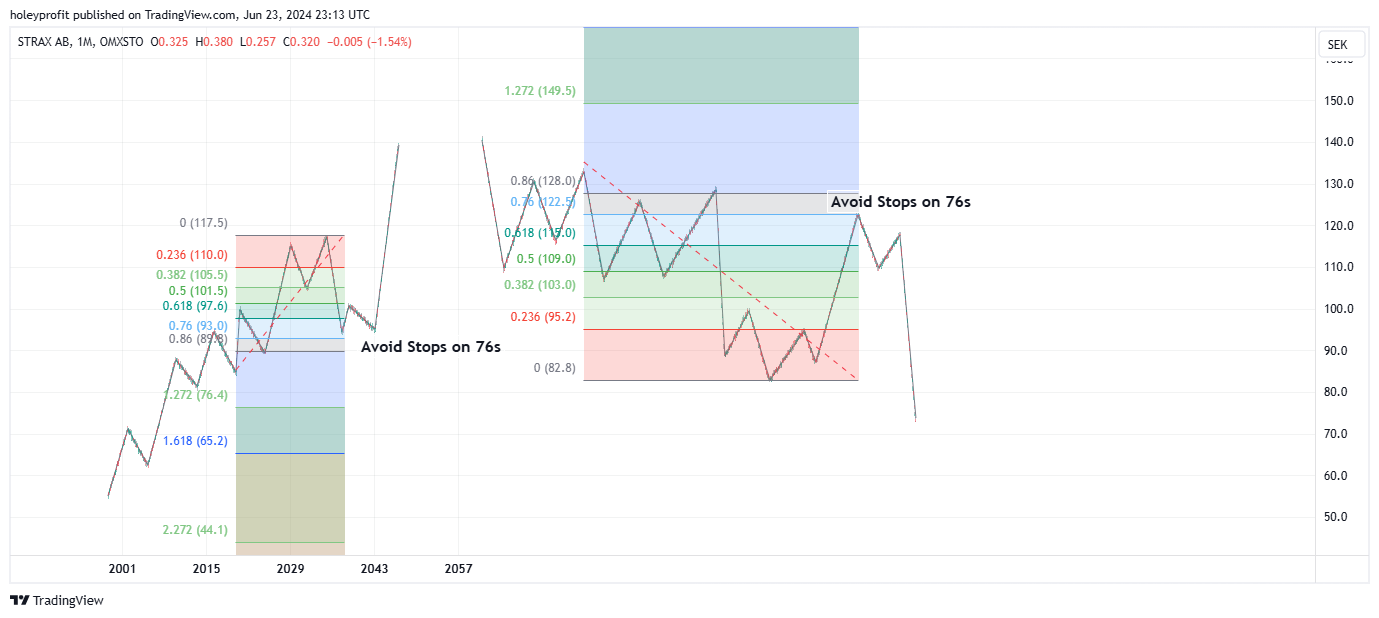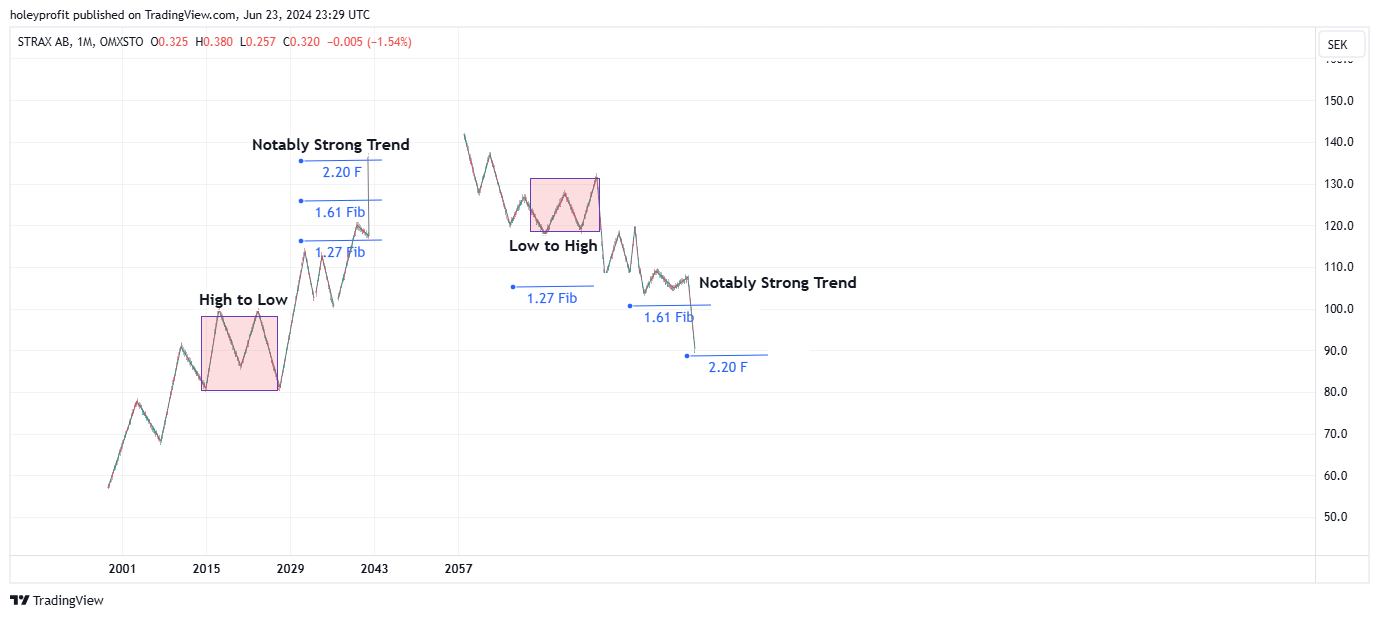This is part of a series of strategy posts.
Once all strategy posts are up, they will be linked together. Initially there will be placeholders for links - Marked “(Link)”. This is because all posts need to be published to be able to interlink them. Please check back later for complete interlinking.
The original series of posts will contain 15 strategies. All of them time tested and ones I’ve personally used to make a living in markets for over 10 years. These will all be free. Multiple additional posts will be added for paid members. Discussing advanced strategy, nuances and covering the common questions we’d expect about the strats.
Strategy Name:
- 1.27 Continuation Strategy
Strategy Type:
- Trend continuation
Strategy Premise Overview:
- At the core, this is a simple breakout and continuation strategy. It just has a couple rules added to it to make it a little more defined and to give more actionable entry and exit criteria.
- The strategy is based on the premise that often a breakout price will extend to a 1.27 of the previous pullback before retesting the breakout. From here we’re trading a fairly bread and butter “Breakout and retest” strategy for the entry and using some fib rules for stops and targets.
Planning Entries:
- After a pullback in a trend and the trend looks to be continuing, draw an extension fib from start to the end of the pullback. Set an alert on the 1.27 fib (This should sync up with a slight breakout of the last high or low - if it does not, something is wrong and your fibs are invalid).
- When the alert pings, a breakout has been made. At this point we’re going to very simply set a pending order on a retest of the break. Basic structural observations will do for this.
- Alternatively, the 86 and 76% fibs can be used for the limit orders. These offer much greater RR but there will be a higher instance of these trades not filling before the follow through move is made.
- It is worth noting that in many instances where this trade works, the entry level will be hit twice. So do not be too quick to move stops to even. Do not be deterred by retests. A bit of a chop period is very common in this setup when it works.
Planning Stops:
- Tight stops: The simplest form of this strategy is just looking for a retest of the break. As such, tight stops can go right next to there. Using some sort of candle patterns perhaps. Very high RR but susceptible to spike outs. Suitable for active day traders who can sustain losing streaks for big wins.
- Wide stops to outside of the swing the fibs are drawn.
-It’s important in this setup that stops go fairly tight or fairly wide. Going for something somewhere in the middle means you’ll end up putting your stop very close, or right on, a 76% retracement. This is a bad place to stop out since it is a level we often see trend continuation. We don’t want our stops on SR levels.
Planning Targets:
- The ultimate target for this trade is close to the 2.20 and 2.61 all the way to 4.23 being viable targets for strong momentum with trailing stops.
-One recurring risk to be aware of in this trade is we can often hit the 1.61 and then retest (And spike out) 1.27. This would take a profitable trade back to essentially even. This can happen even when there will be a follow through to the ultimate targets later (Link).
- This strategy is aiming to pick up good breakout moves in a developing trend. Sometimes there can be a lot of momentum. There are times when the 1.61 breaks with nominal retracements and runs through the following fibs (Link). In these conditions, trailing stops based on the market structure (Small chart trend development rules) is optimal.
Typical Win Path:
- A typical winning path of this trade will test the entry level. Often it will then retest the previous high or low and chop back. Tricky little move that can catch traders out if looking only at candle action but all contained inside of fairly narrow and predictable zone.
- Once 1.27 is broken we will usually see a fairly clean move to 1.61. At 1.61 we have some variants on what commonly happens. Sometimes 1.27 retests and sometimes 1.61 just breaks clean.
- In either event, the defining characteristic of this trade is the momentum obviously picks up once the 1.61 break is solidified. If we’re looking at a bull move, price will go into a parabolic state for a while. In a bear move, a capitulation period. This capitulation break signal has currently worked in virtually all major index crashes throughout history.
Typical Lose Path:
- I find reversals from 1.27 fibs to be very uncommon. However, when they do happen they are often followed by strong and persistent moves that can be very sharp.
- In the instances where this fails as a continuation signal we’re liable to see a lot of counter momentum and sometimes even complete reversals.
-I do not like to trade 1.27 as reversal patterns. I’ve found them too rare to make consistent money off, but it is important to note major reversals can come from them and don’t hang about if it is not working (For example, I believe the Nasdaq high in 2000 was a 1.27 extension).
Why Strategy is Expected to be Successful:
- The strategy leans on the time tested ideas of trend development and breakout > continuation trades. Based on a very simple theory that most people agree has reasonable utility in trending markets.
- The strategy improves upon simple breakout rules by adding; A defined level to be hit to trigger a breakout. More actionable target levels. Tight method for stop management. Better roadmap for the style of move expected if the breakout occurs.
Known Risks and Weaknesses:
- 1.27 reversals I find to be very rare. However, when this strategy does generate false signals they can be some of the nasties ones to be involved in. Taking an entry off this strategy without using the stop loss rules and hoping it works out for you in the end would be a terrible idea. It only has to fail big once to wipe you out.
Trade Plan Execution
Bullish Execution Plan for the 1.27 Continuation Strategy:
Step 1: Market Analysis
- Identify a strongly trending market with clear impulse and corrective waves in an uptrend.
- Confirm the trend direction by analyzing higher highs and higher lows.
Step 2: Draw Fibonacci Extensions
- Identify the most recent significant swing low to swing high.
- Draw Fibonacci extension levels from the start to the end of the pullback.
Step 3: Set Alert
- Set an alert at the 1.27 Fibonacci extension level. This should align with a breakout of the last high.
Step 4: Confirmation and Entry
- When the alert pings, it signals a breakout has occurred.
- Place a pending limit order slightly below the breakout level to catch the retest. Alternatively, set limit orders at the 76% or 86% retracement levels for a better RR, though these might miss the entry if the retest is shallow.
Step 5: Place Stop Loss
-Use either tight stops with local candles and structure or wide stops using larger chart structure. This is a trend strategy betting on higher highs and higher lows. Use this to inform stop losses.
Step 6: Manage Trade
- Expect possible retests and chop around the 1.27 and 1.61 levels.
Step 7: Set Targets
- The initial target is near the 2.20 Fibonacci extension level.
- If momentum continues strong, consider holding with trailing stops for targets near the 2.61 and up to the 4.23 Fibonacci extension levels.
- Use trailing stops to manage the trade beyond the 2.20 level, locking in profits as the price moves higher.
Bearish Execution Plan for the 1.27 Continuation Strategy:
Step 1: Market Analysis
- Identify a strongly trending market with clear impulse and corrective waves in a downtrend.
- Confirm the trend direction by analyzing lower lows and lower highs.
Step 2: Draw Fibonacci Extensions
- Identify the most recent significant swing high to swing low.
- Draw Fibonacci extension levels from the start to the end of the pullback.
Step 3: Set Alert
- Set an alert at the 1.27 Fibonacci extension level. This should align with a breakout of the last low.
Step 4: Confirmation and Entry
- When the alert pings, it signals a breakout has occurred.
- Place a pending limit order slightly above the breakout level to catch the retest. Alternatively, set limit orders at the 76% or 86% retracement levels for a better RR, though these might miss the entry if the retest is shallow.
Step 5: Place Stop Loss
- Use either tight stops with local candles and structure or wide stops using larger chart structure. This is a trend strategy betting on higher highs and higher lows. Use this to inform stop losses.
Step 6: Manage Trade
- Expect possible retests and chop around the 1.27 and 1.61 levels.
Step 7: Set Targets
- The initial target is near the 2.20 Fibonacci extension level.
- If momentum continues strong, consider holding with trailing stops for targets near the 2.61 and up to the 4.23 Fibonacci extension levels.
- Use trailing stops to manage the trade beyond the 2.20 level, locking in profits as the price moves lower.



















